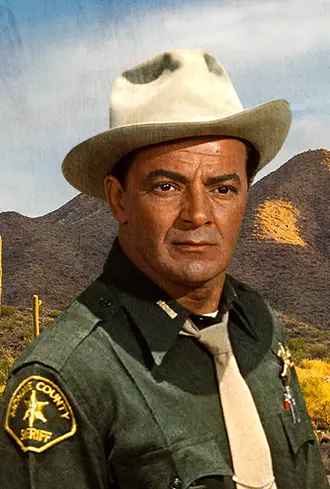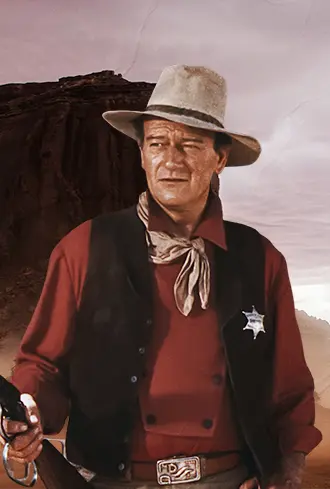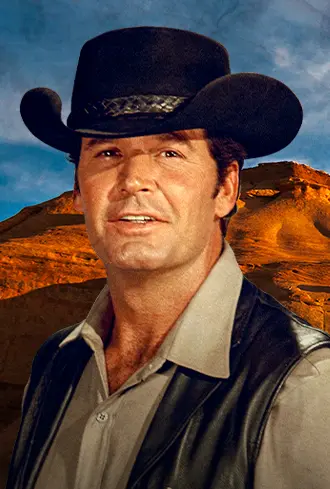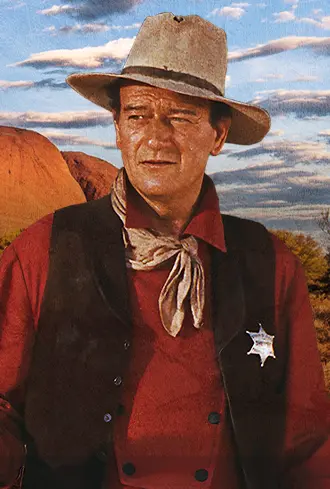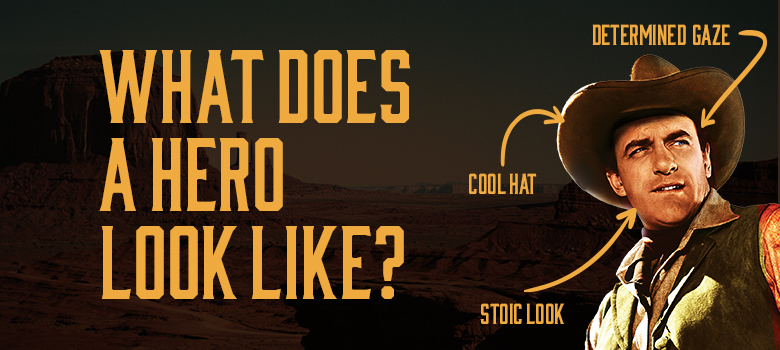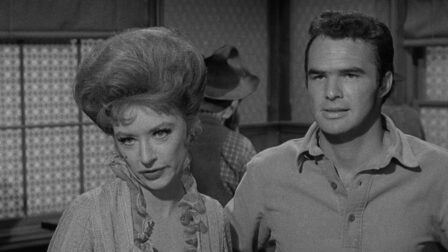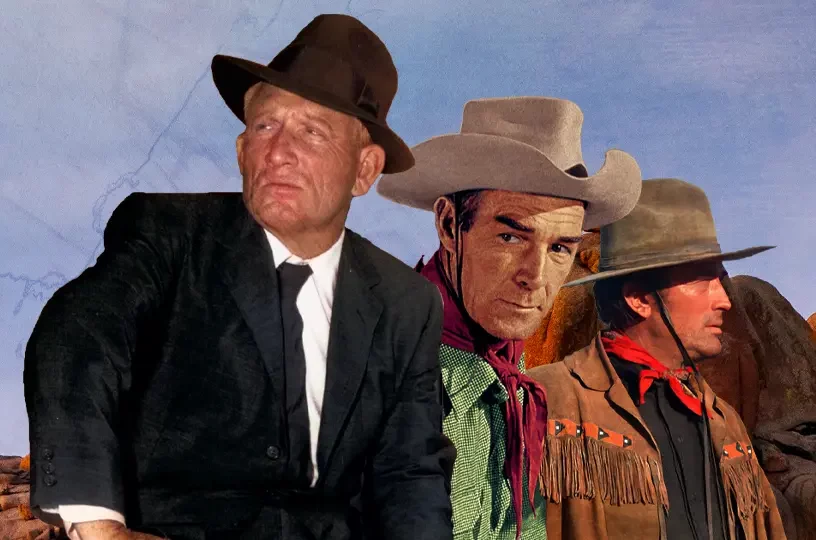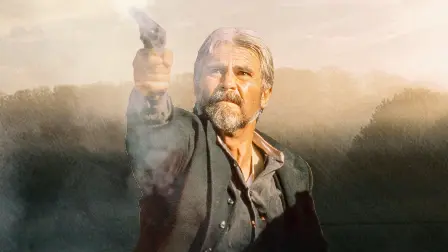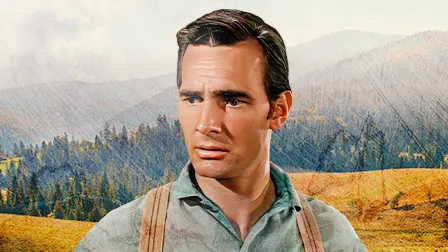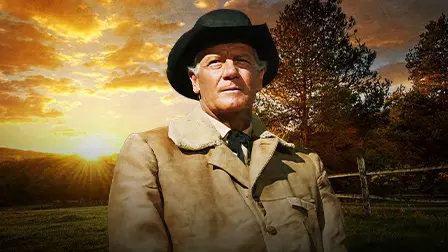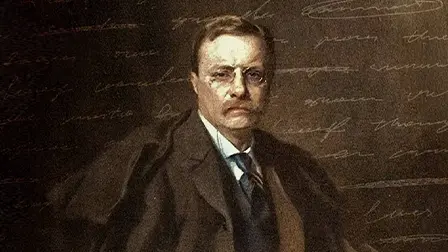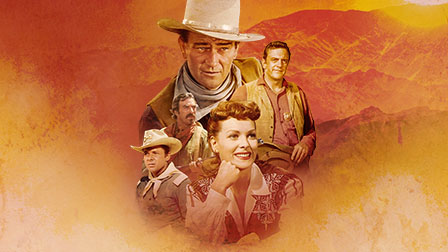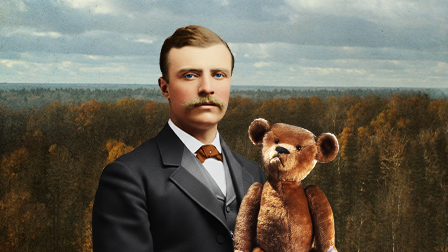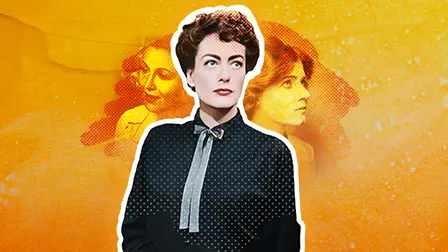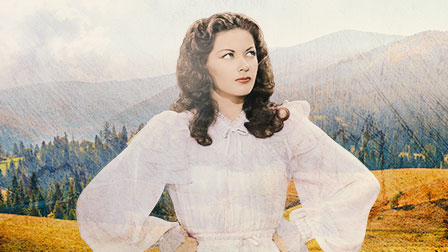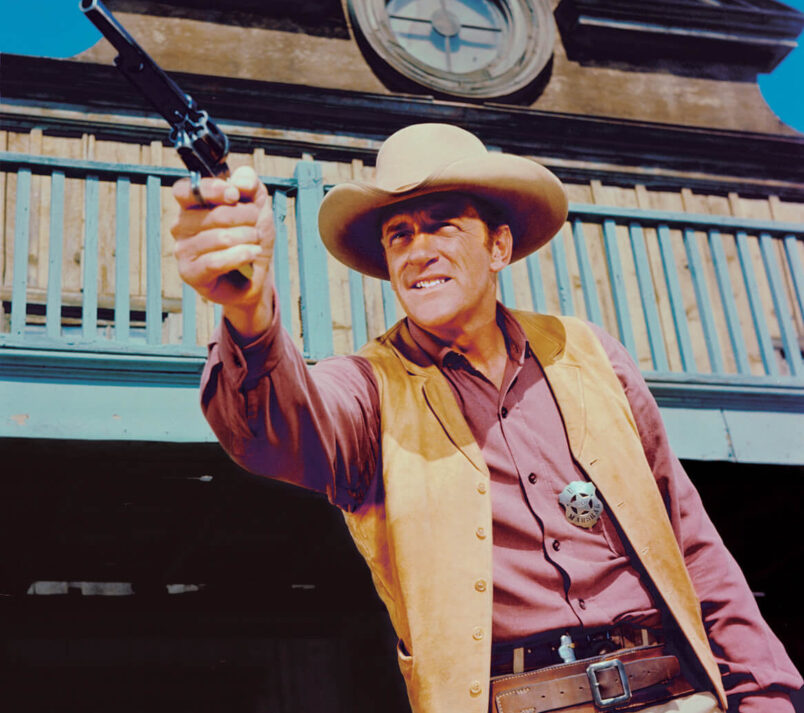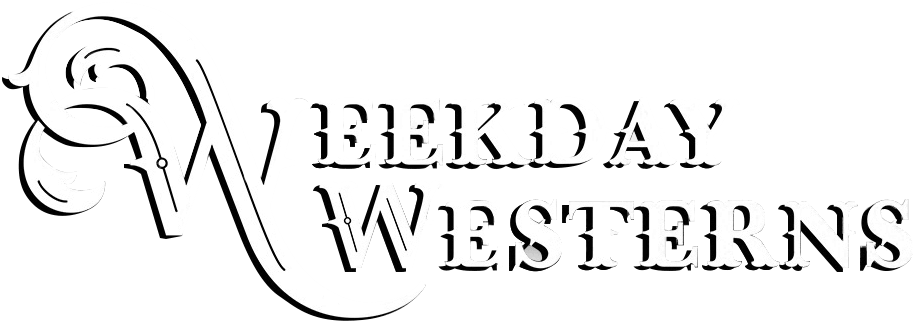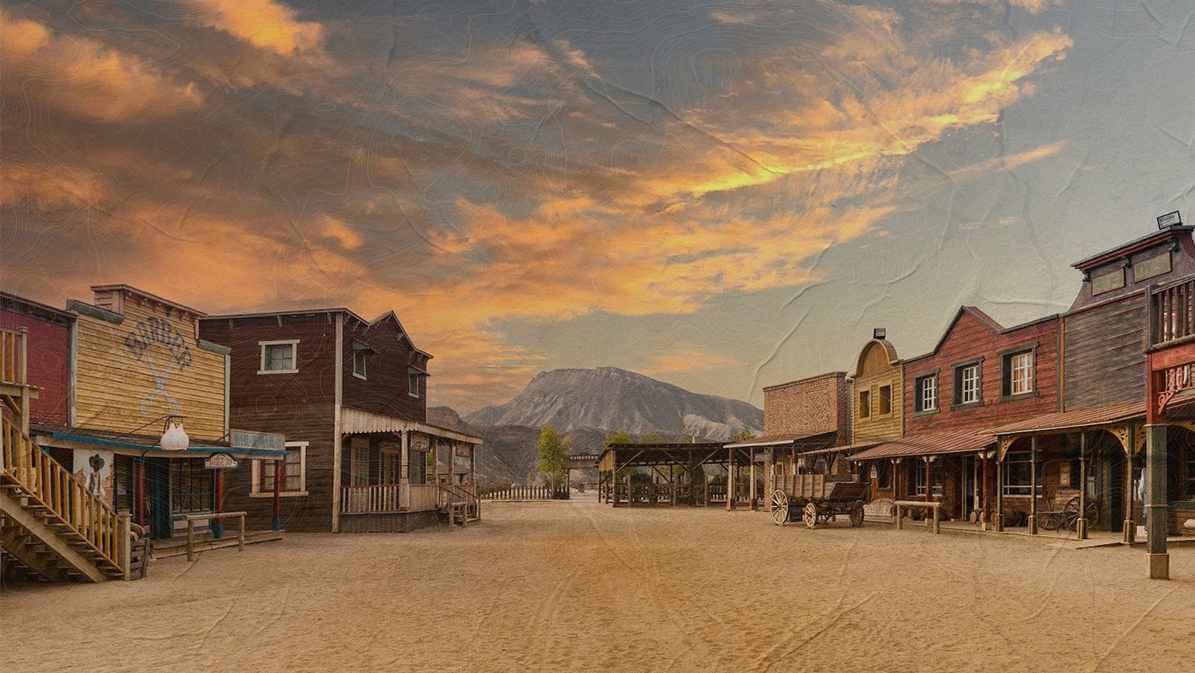The cowboy. The lawman. The outlaw—now reformed. The blacksmith. The sidekick. The soldier. The clerk. The mysterious stranger who comes to town and stays. Grandma and grandpa. Ma and Pa. Sons and daughters, friends and neighbors. The writer. The singer. The teacher. The nurse. And in your own special way—you.
Pioneers to present day, heroes are the men, women, and sometimes, kids, who stand for principle, honor, justice and, simply, doing the right thing.
Take a look at just a few of the actors from movies and shows featured on INSP who portray strong, upstanding characters.
Click on the hero to jump to their section:
John Wayne
James Arness - Gunsmoke
Audie Murphy
Tom Selleck
Barbara Stanwyck - The Big Valley
Maureen O'Hara
Michael Landon - Bonanza
James Drury - The Virginian
Dan Blocker - Bonanza
Chuck Norris - Walker, Texas Ranger
Steve McQueen - Wanted Dead or Alive
Heroes Live Here
John Wayne
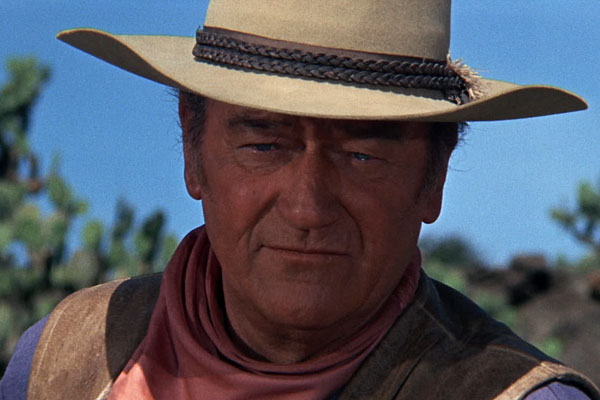 Why He’s a Hero: He was strong, opinionated, larger-than-life and a force to be reckoned with as an actor, a man, and in the characters he played. On the big screen, portraying tough, no-nonsense cowboys, soldiers, lawmen and gunslingers, he was elevated to the status of cultural icon. He embodied the myth, the legend and the history of the Old West, pioneer grit and the American spirit. He was a staunch patriot and, as an avid supporter of the US military, he traveled to the front lines many times on USO tours during WWII. Wayne wanted to enlist, but at age 34, he was exempt from the draft, and since he was one of a few top actors available for work in Hollywood, the studio threatened to sue him if he broke his contract to join up. He never relinquished his eligibility status, even though the studio intervened to continue his deferment.
Why He’s a Hero: He was strong, opinionated, larger-than-life and a force to be reckoned with as an actor, a man, and in the characters he played. On the big screen, portraying tough, no-nonsense cowboys, soldiers, lawmen and gunslingers, he was elevated to the status of cultural icon. He embodied the myth, the legend and the history of the Old West, pioneer grit and the American spirit. He was a staunch patriot and, as an avid supporter of the US military, he traveled to the front lines many times on USO tours during WWII. Wayne wanted to enlist, but at age 34, he was exempt from the draft, and since he was one of a few top actors available for work in Hollywood, the studio threatened to sue him if he broke his contract to join up. He never relinquished his eligibility status, even though the studio intervened to continue his deferment.
Actor John Wayne was born Marion Robert Morrison in Winterset, Iowa, May 26, 1907. When he was seven years old, his family moved to California. Putting down new roots out west set young Marion on course to his destiny—and the nickname that would stay with him for life. The future movie star had a dog, named Duke, who went with him everywhere. A few Glendale firefighters began calling them “Big Duke” and “Little Duke.” The “Duke” moniker stuck, which was preferable to his given name.
In high school, “Duke” played football and was a member of the debate team. He earned a football scholarship to the University of Southern California, but lost it in his second year when an injury ended his promising athletic career. Now, out of school and looking for work during the Great Depression, he managed to pick up small crew gigs at local movie studios. Eventually, Fox Film Corporation hired him full-time as a prop man, basically, moving furniture, props and equipment for the filmmakers. Having a football player’s physique, many directors added him to scenes as an extra, and soon he caught the eye of legendary director, John Ford. Over the years, the two became good friends and colleagues. When director, Raoul Walsh cast Duke in his first starring role, he also renamed the fresh, new face on the Hollywood scene: John Wayne.
Over the course of his long career, Wayne went on to play 142 leading roles in his lifetime. Aside from his numerous industry awards and nominations, including the 1969 Academy Award for Best Actor in a Leading Role for his portrayal of US Marshal Rooster Cogburn in True Grit, Wayne posthumously received The Congressional Gold Medal in 1979 and the Presidential Medal of Freedom in 1980.
Though losing one lung and several ribs to cancer in 1964, he survived the ordeal and continued working tirelessly, until the disease returned. Wayne died of stomach cancer on June 11, 1979, at the age of 72.
Read more about John Wayne:
John Wayne and James Arness: When the Stars Align!
James Arness – Gunsmoke
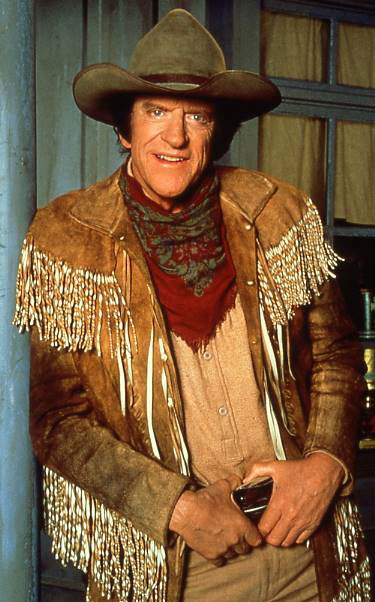 Why He’s a Hero: A legitimate war hero plays a fictional lawman hero! As a rifleman in the US Army, Arness earned the Bronze Star, the Combat Infantryman Badge, the European-African-Middle Eastern Campaign with three Bronze Campaign Stars, Purple Heart, and the World War II Victory Medal.
Why He’s a Hero: A legitimate war hero plays a fictional lawman hero! As a rifleman in the US Army, Arness earned the Bronze Star, the Combat Infantryman Badge, the European-African-Middle Eastern Campaign with three Bronze Campaign Stars, Purple Heart, and the World War II Victory Medal.
On January 22, 1944, he was deployed to Anzio Beachhead, and because of his 6’7” stature, he was ordered first off the landing craft—to determine the depth of the water. As the battle raged on, Arness was severely wounded and later underwent several surgeries to repair damage to his right leg. In spite of the efforts, he endured chronic pain for his entire life, which was acute during his years on Gunsmoke, especially when mounting and dismounting horses.
As US Marshal Matt Dillon, Arness created a character that upheld the law but still had the heart to be fair and just.
Born James Aurness in Minneapolis, Minnesota on June 26, 1923, he dropped the “u” from his name when he began his acting career. Young Arness was not a stellar student in high school, preferring to cut classes rather than apply himself to his studies, but still he managed to earn a diploma in 1942 and get work as a courier for a jeweler, a logger, and at a train yard, loading and unloading freight railroad cars.
When Uncle Sam called, he reported for duty. After receiving his honorable discharge from the US Army, Arness attended Beloit College in Wisconsin, and took a job as a radio announcer, setting him on a new, unexpected course in life, as an entertainer.
Now set on an acting career, he hitchhiked his way to Hollywood where he was cast in several movies and became good friends with John Wayne. When the role of Matt Dillon became available, Wayne recommended his friend, and Arness went on to become a household name.
Gunsmoke ran for twenty years. The final episode aired on March 31, 1975. After the TV run ended, Arness got back in the saddle again as the justice-seeking US Marshal, starring in several Gunsmoke movies, including, Gunsmoke: Return to Dodge, Gunsmoke: One Man’s Justice, Gunsmoke: To The Last Man and Gunsmoke: The Long Ride, which air on INSP. James Arness died on June 3, 2011, at age 88.
Read more about James Arness:
Bruce Boxleitner: On James Arness
Audie Murphy
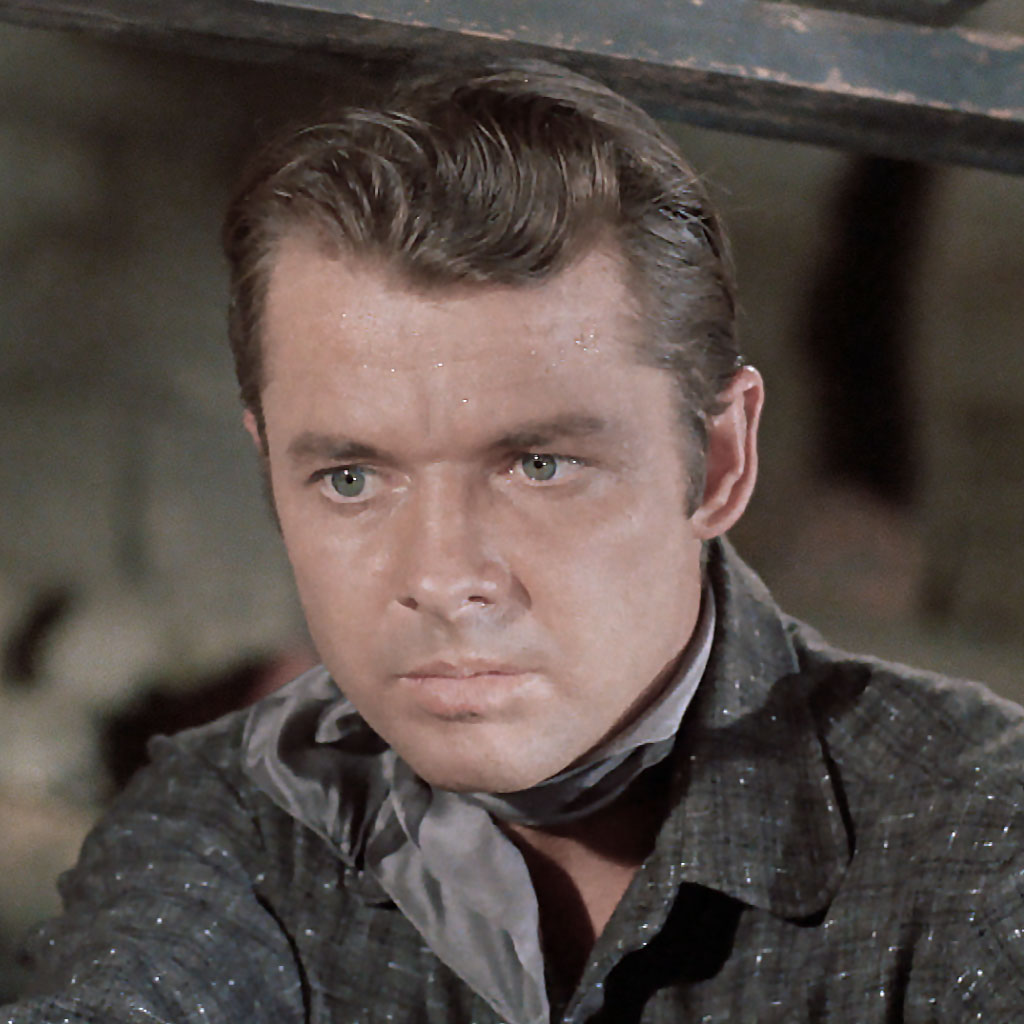 Why He’s a Hero: Off the screen, Audie Murphy is one of the most decorated soldiers in American history. Murphy had received numerous military awards for valor and received the Medal of Honor at the tender age of 19 when he prevented a German company of soldiers from taking over the Colmar Pocket in France entirely by himself. Injured and with no ammunition left, Murphy managed to launch a successful counterattack. Murphy was also a major player in some of the war’s most infamous battles, including the 1943 Allied Invasion of Sicily, the 1944 Battle of Anzio, and the liberation of Rome. On the screen, Murphy depicted the real-life events from his time as a soldier in the film To Hell and Back. Throughout his many films, he portrayed characters with dignity, a kind heart, and a courageous spirit.
Why He’s a Hero: Off the screen, Audie Murphy is one of the most decorated soldiers in American history. Murphy had received numerous military awards for valor and received the Medal of Honor at the tender age of 19 when he prevented a German company of soldiers from taking over the Colmar Pocket in France entirely by himself. Injured and with no ammunition left, Murphy managed to launch a successful counterattack. Murphy was also a major player in some of the war’s most infamous battles, including the 1943 Allied Invasion of Sicily, the 1944 Battle of Anzio, and the liberation of Rome. On the screen, Murphy depicted the real-life events from his time as a soldier in the film To Hell and Back. Throughout his many films, he portrayed characters with dignity, a kind heart, and a courageous spirit.
Born in the small Texas town of Kingston, Murphy faced adversity from an early age. When his father walked out on him, his mother, and 11 siblings, Murphy dropped out of the fifth grade to help support his family. He picked cotton and became familiar with a rifle, killing small game to put food on the table. In 1941, Murphy’s life would forever change. While the passing of his mother left him heartbroken, the attack on Pearl Harbor motivated him to do his part to protect the country. After lying about his weight and age, Murphy joined the army and proved that despite his small stature, he was a true hero through and through.
After the war ended, Murphy received recognition for his bravery, and LIFE magazine featured him on the cover in July of 1945. Grabbing the attention of actor James Cagney and his producer brother, Bill, the two brothers reached out to Murphy and convinced him to give it a go as an actor. Murphy would go on to be a mainstay in Western films, appearing in series and movies for over 20 years.
In 1971, tragedy struck when Murphy and five others lost their lives in a plane crash. He was only 45 years old.
Read more about Audie Murphy:
Facts About War Hero & Western Star Audie Murphy
Top 5 Moments Audie Murphy Showed True Character
Tom Selleck
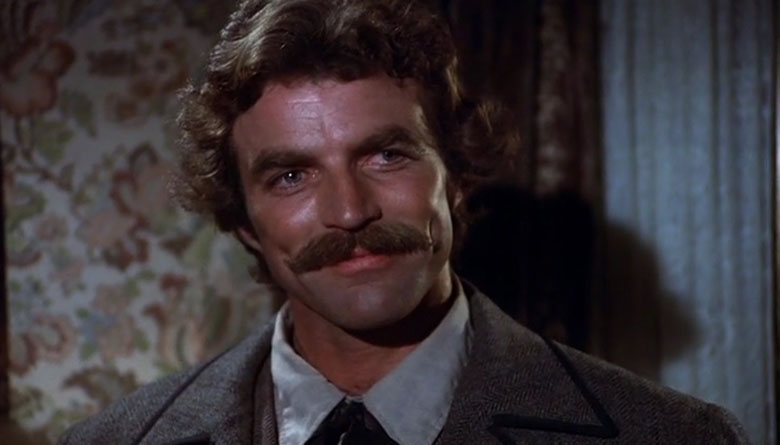 Why He’s a Hero: While Tom Selleck is a California Army National Guard veteran, most of his heroics come from his work in TV and film. The epitome of the American spirit, Tom Selleck conveys a sense of justice and honor to every character he brings to life. Whether he’s playing a class act cowboy or a tough-as-nails lawman, Selleck instills the characteristics of a true hero in every role he portrays.
Why He’s a Hero: While Tom Selleck is a California Army National Guard veteran, most of his heroics come from his work in TV and film. The epitome of the American spirit, Tom Selleck conveys a sense of justice and honor to every character he brings to life. Whether he’s playing a class act cowboy or a tough-as-nails lawman, Selleck instills the characteristics of a true hero in every role he portrays.
Born in 1945, Selleck is a Detroit native, but his family relocated to Sherman Oaks, California, when he was a toddler. After graduating high school, Selleck lived at home while he attended Los Angeles Valley College. By his junior year, he transferred to the University of Southern California to join their men’s basketball team. While at USC, a drama coach encouraged him to take up acting, and it wasn’t long until Selleck realized where his passion lay. Dropping out of college his senior year to pursue his newfound career, Selleck enrolled at the Beverly Hills Playhouse to perfect his craft. Over the next 15 years, Selleck landed minor roles in movies, series, and commercials. But in 1979, he starred in the made-for-TV movie, The Sacketts, which launched his career and cemented his status as a Western leading man.
Today, Selleck is Hollywood royalty, starring in the recurring role as Jesse Stone in nine films, with the tenth film in the works. Since 2010, Selleck has starred as the patriarch of the Reagan family in the hit show Blue Bloods.
Read more about Tom Selleck:
Barbara Stanwyck – The Big Valley
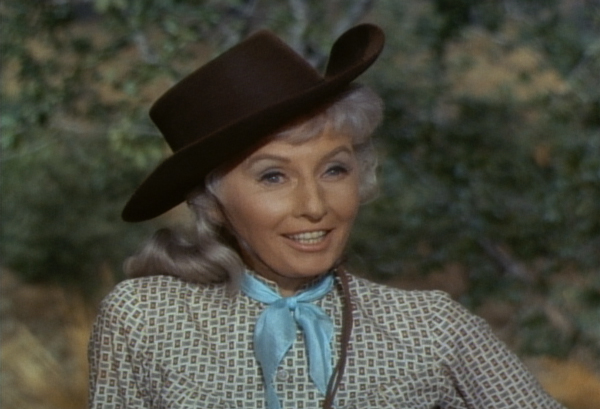 Why She’s a Hero: On-screen and off, Barbara Stanwyck was a force to be reckoned with! A gifted actress and powerful personality, she captivated fans during her 60-year Hollywood career, playing intelligent, strong-willed, independent women. She was truly a woman ahead of her time.
Why She’s a Hero: On-screen and off, Barbara Stanwyck was a force to be reckoned with! A gifted actress and powerful personality, she captivated fans during her 60-year Hollywood career, playing intelligent, strong-willed, independent women. She was truly a woman ahead of her time.
Born Ruby Catherine Stevens in Brooklyn, New York on July 16, 1907, she was orphaned just four years later when her mother died unexpectedly in a streetcar accident, and her father abandoned his five children. Young Barbara went to live with an older sister, a showgirl, and not surprisingly, she grew up fast, fending for herself in an age where girls were groomed for marriage, not careers, especially if her dream was in the spotlight. She quit school at 14. While working for a telephone company, she went out on auditions. A few years later, she landed a spot as a chorus girl and in 1926, she made her Broadway debut as a dancer. In the late 1920s, Stanwyck left Broadway for Hollywood, and after a rough start as a film actress, garnering little to no recognition, she convinced Frank Capra to cast her in his 1930 film, Ladies of Leisure, and Hollywood knew it had a new star in the making.
After a long and lauded movie career, a more mature Stanwyck turned to TV and she rode into the role of Victoria Barkley like the star she was—powerful, strong, in control.
Stanwyck died on January 20, 1990, of congestive heart failure at the age of 82.
Read more about Barbara Stanwyck:
The Big Valley and Beyond: The Life & Career of Barbara Stanwyck
Hollywood Legend: Barbara Stanwyck—Her Life and Career
Barbara Stanwyck’s Victoria Barkley: Queen of The Big Valley
Maureen O’Hara
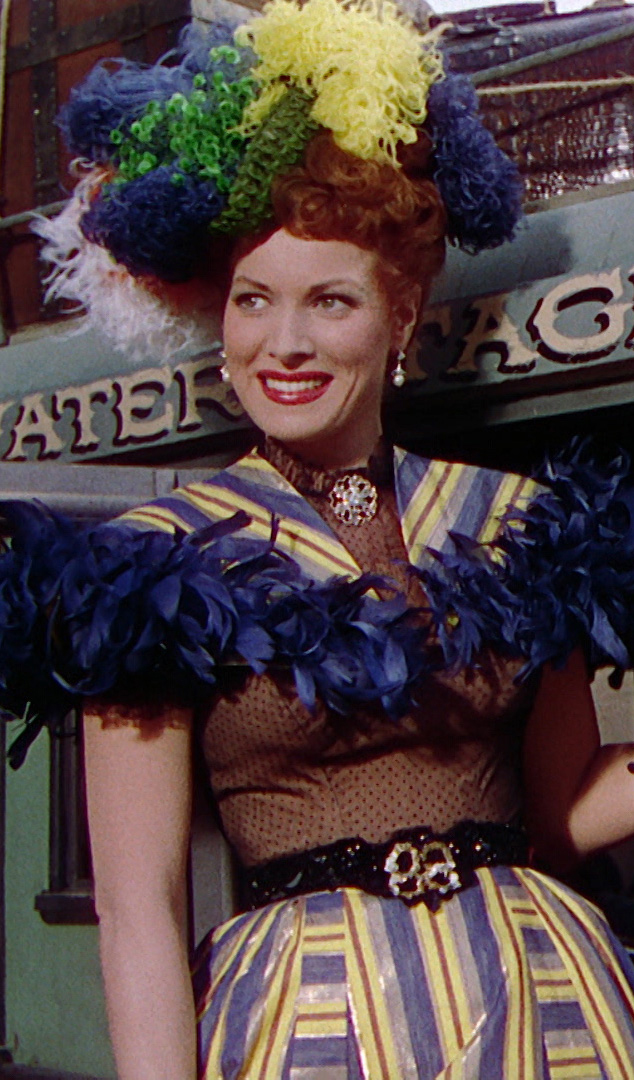 Why She’s a Hero: She was feisty, fearless and blunt, a woman who knew her own mind and wasn’t shy about expressing her thoughts. Throughout her long and productive career, if an actor or director insulted her or made untoward advances, she stood her ground, and made it known, in no uncertain terms, she wasn’t one to be trifled with. In many of her roles, she portrayed women as independent and strong as she was in real life, especially in roles opposite John Wayne, who was one of her best friends.
Why She’s a Hero: She was feisty, fearless and blunt, a woman who knew her own mind and wasn’t shy about expressing her thoughts. Throughout her long and productive career, if an actor or director insulted her or made untoward advances, she stood her ground, and made it known, in no uncertain terms, she wasn’t one to be trifled with. In many of her roles, she portrayed women as independent and strong as she was in real life, especially in roles opposite John Wayne, who was one of her best friends.
Born Maureen FitzSimmons on August 17, 1920 near Dublin, Ireland. She was one of six children, born into, as she once put it, “the most remarkable and eccentric family…” Her father was part owner of a soccer team and her mother was an opera singer. Young Maureen embodied the best of both of them. She was quite the tomboy, and excelled at sports. At the same time, she displayed remarkable talent for acting and singing. Though, she could kick a ball as well as any boy, her heart was on stage and at age 14, she was accepted into the prestigious Abbey Theatre in Dublin. Stage and radio roles followed, and at age 18, she was cast in bit parts in two movies filmed in London. While there, she screen tested for another film, and though she felt the test went poorly, it caught the eye of renowned actor, producer and director, Charles Laughton. He signed her to a seven-year contract with his production company, and over the years, he became her mentor, co-star and good friend—though it did take some convincing to get her to change her last name from “FitzSimmons” to the simpler “O’Hara.”
Soon she established a reputation for portraying fiercely independent women who could go toe-to-toe with any man, women who could hold their own in battle and survive in dire circumstances. She performed her own stunts and wielded a sword with deadly accuracy in many a swashbuckler movie. O’Hara’s career soared when she met director, John Ford, and when he paired her with John Wayne, their equally strong personalities created a chemistry that lit up the movie screen. O’Hara and Wayne remained close friends for life.
Wayne said of his friendship with her, "There's only one woman who has been my friend over the years, and by that I mean a real friend, like a man would be. That woman is Maureen O'Hara. She's big, lusty, absolutely marvelous—definitely my kind of woman. She's a great guy. I've had many friends, and I prefer the company of men. Except for Maureen O'Hara."
Known as the “Queen of Technicolor,” because her striking red hair and green eyes brought out the best of that new invention, Maureen O’Hara died after a long and lauded film career, in Boise, Idaho on October 24, 2015 at the age of 95.
Read more about Maureen O'Hara:
Michael Landon – Bonanza
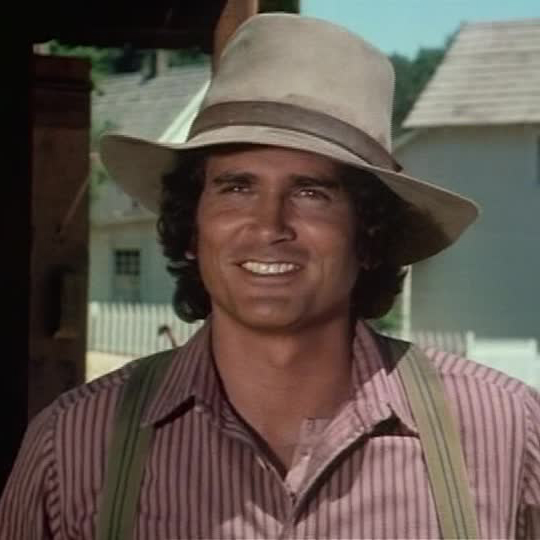 Why He’s a Hero: Little Joe was young, hot-headed, charming and ever the ladies’ man, but like all the Cartwrights, he stood for justice. Charles Ingalls was a wise, loving husband and father with an endearing sense of humor. In real life, as a child and teen, Landon endured a difficult and sometimes humiliating family life, was bullied at school, called anti-Semitic slurs, but managed to find the fortitude to succeed against the odds.
Why He’s a Hero: Little Joe was young, hot-headed, charming and ever the ladies’ man, but like all the Cartwrights, he stood for justice. Charles Ingalls was a wise, loving husband and father with an endearing sense of humor. In real life, as a child and teen, Landon endured a difficult and sometimes humiliating family life, was bullied at school, called anti-Semitic slurs, but managed to find the fortitude to succeed against the odds.
Born Eugene Maurice Orowitz on October 31, 1936, in Forest Hills, Queens, New York, Landon chose his now-famous professional name from a phone book when he began his acting career. When he was four years old, his parents moved the family to New Jersey, and over the years, young Maurice became an outcast, a loner, barely graduating from high school, though he had a genius IQ.
An athletic scholarship gained him entry to the University of Southern California, but his performance fell well short of his high school, record-breaking throwing distance in javelin. In an attempt to regain his form, he injured himself, ending his sports career—and scholarship. At the end of his freshman year, he dropped out, taking odd jobs to support himself. One day, an aspiring actor friend at a warehouse job asked him to play a role in a scene for an acting school audition. The friend was not accepted. But Eugene Orowitz got in, and soon transformed into Michael Landon. Minor roles in TV Westerns followed then in 1957, he was cast in the hit film I Was a Teenage Werewolf. Two years later David Dortort signed him for the role of Little Joe Cartwright in Bonanza.
Over the years, Landon matured into a confident actor, writer and director, all skills he brought to his role as Charles Ingalls in Little House on the Prairie.
Michael Landon died of pancreatic cancer on July 1, 1991, at age 54.
Read more about Michael Landon:
From the Ponderosa to the Prairie: The Michael Landon Story
James Drury – The Virginian
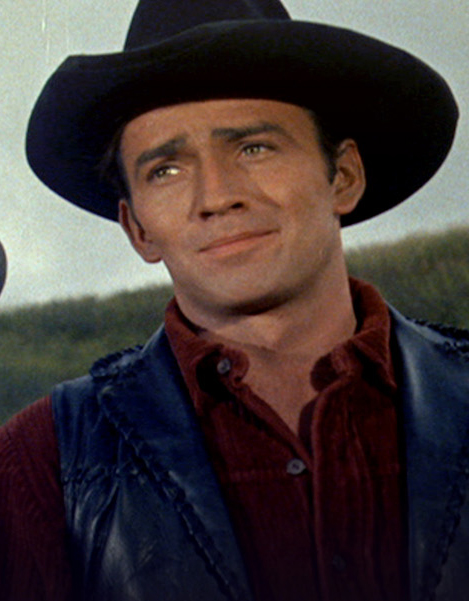 Why He’s a Hero: As an actor, he was a city slicker with authentic cowboy roots and values. His grandfather traveled west by wagon train from Missouri as a teen in the 1880s. As the Virginian, he exemplifies upstanding character and upholds justice with a fair hand, if possible, without force.
Why He’s a Hero: As an actor, he was a city slicker with authentic cowboy roots and values. His grandfather traveled west by wagon train from Missouri as a teen in the 1880s. As the Virginian, he exemplifies upstanding character and upholds justice with a fair hand, if possible, without force.
Born in New York City on April 18, 1934, James Drury grew up in the best of two worlds. His father was a professor at New York University and his mother brought him to a family ranch in Oregon every summer where young James learned to ride, and under his grandfather’s instruction, learned marksmanship and woodsman skills. These experiences instilled in Drury a set of core values based in ranch life and the cowboy way. He brought this abiding love of horses, cowboy life and the great outdoors to his role as The Virginian. Drury was inducted into the Hall of Great Western Performers at the National Cowboy and Western Heritage Museum in Oklahoma City in 1991.
With over 70 credits to his name, not counting his stage work, Drury starred in several lesser-known, rare movie performances produced by none other than “Uncle Sam.” As a Lieutenant Commander in the US Naval Reserve, Drury appeared in many recruiting films and at public events.
Now, in his mid-80s, Drury continues to make public appearances at Western events, as his health and his wife’s health allow.
Read more about James Drury:
James Drury: The Man Behind The Virginian.
James Drury’s Favorite Episodes of The Virginian
Dan Blocker – Bonanza
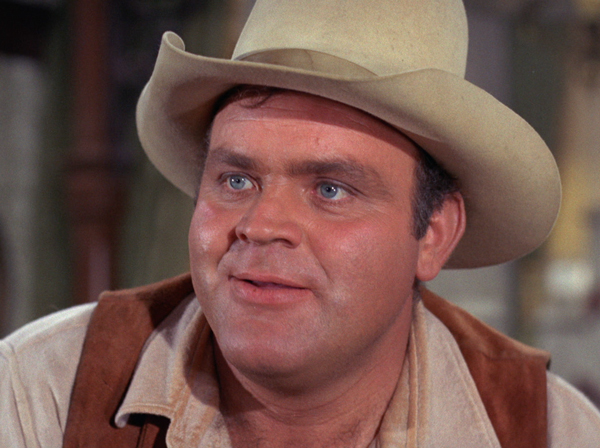 Why He’s a Hero: Hoss is the big, shy, gullible and loveable Cartwright brother who would sweep you away with his humility, innocence and puppy-dog sincerity, but perish the outlaw or conman who mistakes that kind demeanor for weakness. Dan Blocker brought much of his own generous spirit to his portrayal of Hoss. A man who cared deeply for people, especially those on the fringes of society, he could not abide by injustice. No one would deny that Dan Blocker had a heart of gold.
Why He’s a Hero: Hoss is the big, shy, gullible and loveable Cartwright brother who would sweep you away with his humility, innocence and puppy-dog sincerity, but perish the outlaw or conman who mistakes that kind demeanor for weakness. Dan Blocker brought much of his own generous spirit to his portrayal of Hoss. A man who cared deeply for people, especially those on the fringes of society, he could not abide by injustice. No one would deny that Dan Blocker had a heart of gold.
Weighing 14 pounds at birth, on December 10, 1928, in the town of DeKalb, Bobby Dan Davis Blocker still holds the record as the largest baby born in Bowie County, Texas.
At age 13, Dan enrolled in the Texas Military Institute and was a linebacker on their football team. His skills on the gridiron earned him a scholarship to Sul Ross State University where he was to play football and study English.
At one point, the drama club was staging Arsenic and Old Lace, and they needed a stagehand strong enough to move the heavy dummies used for “dead bodies” in the production, and Dan fit the bill. He fit it so well, in fact, they convinced him to play a small role. Once he got a taste of being in the spotlight, Dan was hooked. He changed his major from English to Theater.
After graduation, he put his stage career on hold to serve in the Korean War, where he earned a Purple Heart, among several other medals, citations and awards. After the war, he married, and with a young family to support, he took a job as a high school English and Drama teacher in Sonora, Texas and later taught sixth grade in New Mexico.
Wanting to advance his teaching career, he moved his family to California, where he began studying for his Ph.D. in Dramatic Arts at UCLA, while he continued to teach. To make ends meet, he auditioned for Western TV shows, which were popular at the time, and played several bit parts and a recurring role on a short-lived series. When David Dortet cast him as Hoss Cartwright in Bonanza, Blocker had to make a difficult choice between the logical, responsible path, and following his heart. He quit his doctoral studies to return to acting full-time, ultimately, becoming one of the most beloved actors on TV.
Blocker died on May 13, 1972, due to a blood clot during a routine gallbladder surgery. He was 43 and at the peak of his career.
Read more about Dan Blocker:
Dan Blocker: A Big Man with a Big Heart
Chuck Norris – Walker, Texas Ranger
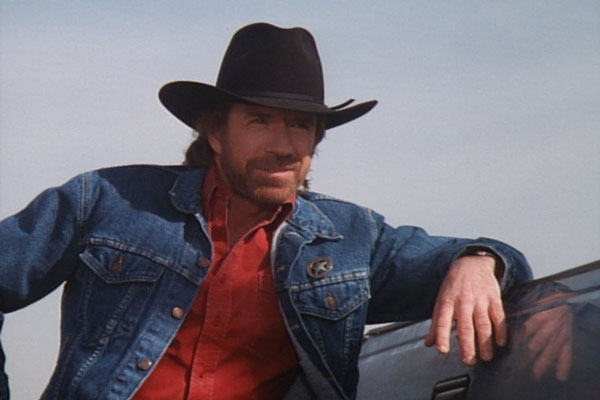 Why He’s a Hero: In real life and in his role as Texas Ranger Cordell Walker, Norris is a warrior for justice, a martial arts advocate and mentor to young at-risk kids, and a believer in redemption.
Why He’s a Hero: In real life and in his role as Texas Ranger Cordell Walker, Norris is a warrior for justice, a martial arts advocate and mentor to young at-risk kids, and a believer in redemption.
Born Carlos Ray Norris on March 10, 1940, his childhood was one of poverty. After Norris graduated from high school, he joined the US Air Force, and was stationed in South Korea, where he acquired the nickname “Chuck,” and literally kicked off a post-military career. He began studying Tang Soo Do, a Korean martial art known for its athletic and artistic kicks.
In the early 70s, Norris met actor and martial arts expert, Bruce Lee. They became friends and workout buddies. When Lee asked Norris to play his opponent in a film, Hollywood found its next action star.
Today, Norris continues to pay it forward through his many philanthropic efforts.
Read more about Chuck Norris:
Chuck Norris: The Myth and the Man
Chuck Norris Reaches New Heights by Going to the Mat!
Chuck Norris, a Texan After all These Years
Steve McQueen – Wanted Dead or Alive
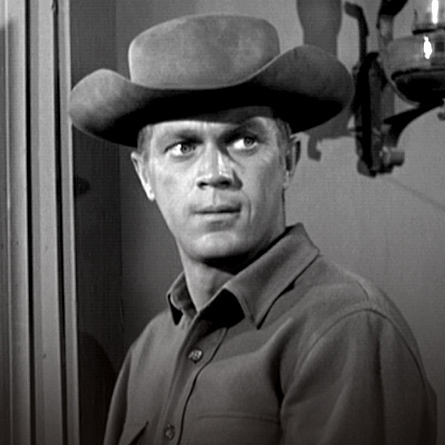 Why He’s a Hero: Steve McQueen was the ultimate cool dude with a taste for adventure and taking risks, the “bad boy” who overcame harrowing odds on the road to redemption. Many of the roles he played reflected parts of his own life. In Wanted Dead or Alive, he portrays, bounty hunter, Josh Randall. In the Old West, bounty hunters were reviled, as most would do anything to cash in on the capture (or death) of an outlaw. But Josh Randall, as played by McQueen is different. This bounty hunter seeks justice more than the monetary reward.
Why He’s a Hero: Steve McQueen was the ultimate cool dude with a taste for adventure and taking risks, the “bad boy” who overcame harrowing odds on the road to redemption. Many of the roles he played reflected parts of his own life. In Wanted Dead or Alive, he portrays, bounty hunter, Josh Randall. In the Old West, bounty hunters were reviled, as most would do anything to cash in on the capture (or death) of an outlaw. But Josh Randall, as played by McQueen is different. This bounty hunter seeks justice more than the monetary reward.
Born Terrence Steven McQueen on March 24, 1930, in Beech Grove, Indiana, he was abandoned by his father when he was just a few months old. His mother, Julian, unable to handle the stress of raising an infant on her own, left her baby with her parents, who later, coming upon hard times sent the child to McQueen’s great-uncle, Claude. Claude had a positive influence on the growing boy, acting as a father figure to him, but over the years, McQueen’s mother repeatedly sent for him to live with her, wherever she landed, then abruptly shipped him back to Claude’s farm. She married and divorced twice, and both husbands physically abused McQueen when he lived with them. The dysfunctional family situation took its toll on young McQueen, and he began acting out. He joined a gang, and committed petty crimes.
At around age 14, living in California, he was caught stealing hubcaps, and at the urging of his new stepfather, his mother signed a court order to send McQueen to a reform school.
He was a rule breaker, and it took quite some time for him to get with the program. At 16, he rejoined his mother, now living in New York, but the reunion didn’t last long. He ditched school, and joined a merchant marine ship headed to the Dominican Republic. Still unable to handle policies and authority, he abandoned his post, and made his way to Texas where he worked odd jobs, including working on oil rigs and as a carnival barker, until he joined the US Marines as a tank driver. But, ever the rebel, he managed to turn a weekend pass into AWOL, when he decided to enjoy a couple of weeks with his girlfriend. He had a lot of time to think about life while spending 41 days in the brig, and when he was released, he refocused, and even saved five Marines’ lives during an ill-fated exercise in the Arctic.
Back in New York, after his honorable discharge, an actress girlfriend got him interested in acting, and in 1951, he enrolled in Sanford Meisner’s Neighborhood Playhouse. It was clear to everyone this rough kid, this troublemaker, had talent. A year later, he won a coveted scholarship to study at the Uta Hagen-Herbert Berghof School, and a few years later, he studied with Lee Strasberg at the prestigious Actors Studio. He started getting stage roles and in 1956 he replaced Ben Gazzara in the Broadway production of A Hatful of Rain. Two years later, he was cast in his first leading part in a film, playing teenager Steve Andrews in the Sci-fi classic, The Blob. That same year, he made the leap to television, in the starring role of Josh Randall on Wanted Dead or Alive. An avid racecar driver and motorcycle enthusiast, McQueen often did his own stunts—as long as the production insurance allowed.
In December 1979, McQueen was diagnosed with Mesothelioma, and the cancer spread rapidly. Despite going to Mexico for several experimental and unorthodox treatments, he died of heart failure, in a clinic in Juárez, on November 7, 1980, after an attempt to remove a large abdominal tumor. He was 50 years old.
Suggest a Correction
We strive for accuracy and fairness. But if you see something that doesn’t look right, click here to contact us!

